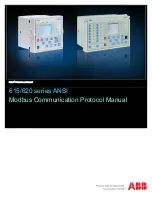
CLS200 Series User’s Guide
Chapter 7: Turning and Control
135
Distributed Zero Crossing (DZC)
With DZC outputs, the PID algorithm calculates an output between 0 and 100%, but the output is
distributed on a variable time base. For each ac line cycle, the controller decides whether the power
should be on or off. There is no fixed cycle time since the decision is made for each line cycle. When
used in conjunction with a zero crossing device, such as a solid state relay (SSR), switching is done
only at the zero crossing of the ac line, which helps reduce electrical noise.
Using a DZC output should extend the life of heaters. Since the time period for 60Hz power is
16.6ms, the switching interval is very short and the power is applied uniformly. DZC should be used
with SSRs. Do not use DZC output for electromechanical relays.
The combination of DZC output and a solid state relay can inexpensively approach the effect of
analog, phase-angle fired control. Note, however, DZC switching does not limit the current and
voltage applied to the heater as phase-angle firing does.
Three-Phase Distributed Zero Crossing (3P DZC)
This output type performs exactly the same as DZC except that the minimum switching time is three
ac line cycles. This may be advantageous in some applications using three-phase heaters and three-
phase power switching.
Analog Outputs
For analog outputs, the PID algorithm calculates an output between 0 and 100%. This percentage of
the analog output range can be applied to an output device via a Dual DAC or a Serial DAC.
Output Filter
The output filter digitally smooths PID control output signals. It has a range of 0 to 255 scans, which
gives a time constant of 0 to 170 seconds for a sixteen-loop controller, 0 to 85 seconds for an
eight-loop controller or 0 to 43 seconds for a four-loop controller. Use the output filter if you need to
filter out erratic output swings due to extremely sensitive input signals, like a turbine flow signal or an
open air thermocouple in a dry air gas oven.
The output filter can also enhance PID control. Some processes are very sensitive and would
otherwise require a large proportional band, making normal control methods ineffective. Using the
output filter allows a smaller proportional band to be used, achieving better control.
Also, use the filter to reduce the process output swings and output noise when a large derivative is
necessary, or to make badly tuned PID loops and poorly designed processes behave properly.
Reverse and Direct Action
With reverse action an increase in the process variable causes a decrease in the output. Conversely,
with direct action an increase in the process variable causes an increase in the output. Heating
applications normally use reverse action and cooling applications usually use direct action.
















































